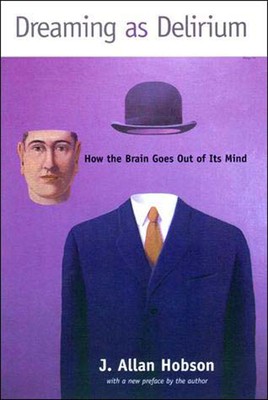
- We will send in 10–14 business days.
- Author: J Allan Hobson
- Publisher: MIT Press
- ISBN-10: 0262581795
- ISBN-13: 9780262581790
- Format: 15.1 x 22.7 x 2.2 cm, minkšti viršeliai
- Language: English
- SAVE -10% with code: EXTRA
Reviews
Description
In this book J. Allan Hobson sets out a compelling--and controversial--theory of consciousness. Our brain-mind, as he calls it, is not a fixed identity but a dynamic balancing act between the chemical systems that regulate waking and dreaming.With a new foreword by the author.
In this book, J. Allan Hobson sets out a compelling--and controversial--theory of consciousness. Our brain-mind, as he calls it, is not a fixed identity but a dynamic balancing act between the chemical systems that regulate waking and dreaming. Drawing on his work both as a sleep researcher and as a psychiatrist, Hobson looks in particular at the strikingly similar chemical characteristics of the states of dreaming and psychosis. His underlying theme is that the form of our thoughts, emotions, dreams, and memories derive from specific nerve cells and electrochemical impulses described by neuroscientists. Among the questions Hobson explores are: What are dreams? Do they have any hidden meaning, or are they simply emotionally salient images whose peculiar narrative structure refects the unique neurophysiology of sleep? And what is the relationship between the delirium of our dream life and psychosis?
Originally published by Little, Brown under the title The Chemistry of Conscious States.
EXTRA 10 % discount with code: EXTRA
The promotion ends in 21d.05:01:12
The discount code is valid when purchasing from 10 €. Discounts do not stack.
- Author: J Allan Hobson
- Publisher: MIT Press
- ISBN-10: 0262581795
- ISBN-13: 9780262581790
- Format: 15.1 x 22.7 x 2.2 cm, minkšti viršeliai
- Language: English English
With a new foreword by the author.
In this book, J. Allan Hobson sets out a compelling--and controversial--theory of consciousness. Our brain-mind, as he calls it, is not a fixed identity but a dynamic balancing act between the chemical systems that regulate waking and dreaming. Drawing on his work both as a sleep researcher and as a psychiatrist, Hobson looks in particular at the strikingly similar chemical characteristics of the states of dreaming and psychosis. His underlying theme is that the form of our thoughts, emotions, dreams, and memories derive from specific nerve cells and electrochemical impulses described by neuroscientists. Among the questions Hobson explores are: What are dreams? Do they have any hidden meaning, or are they simply emotionally salient images whose peculiar narrative structure refects the unique neurophysiology of sleep? And what is the relationship between the delirium of our dream life and psychosis?
Originally published by Little, Brown under the title The Chemistry of Conscious States.


Reviews